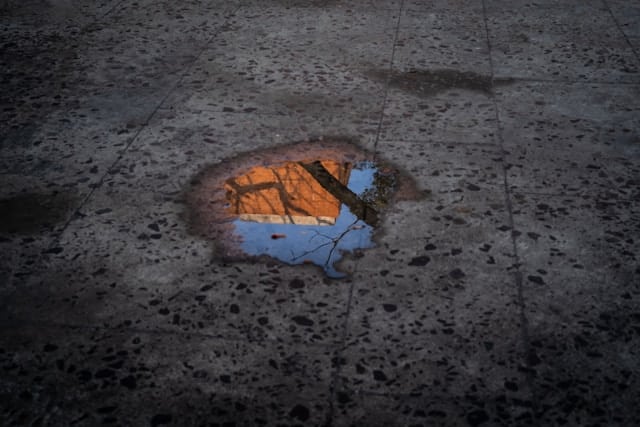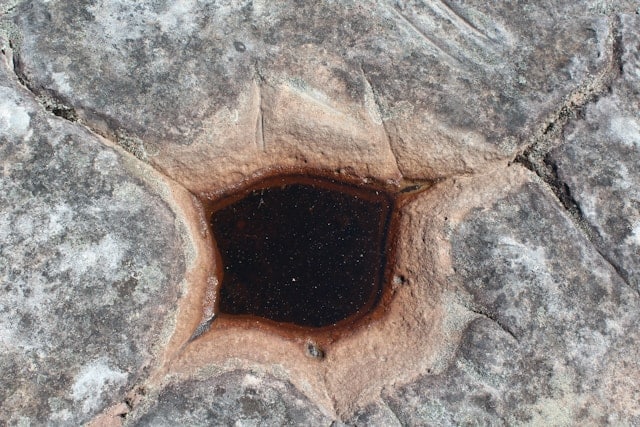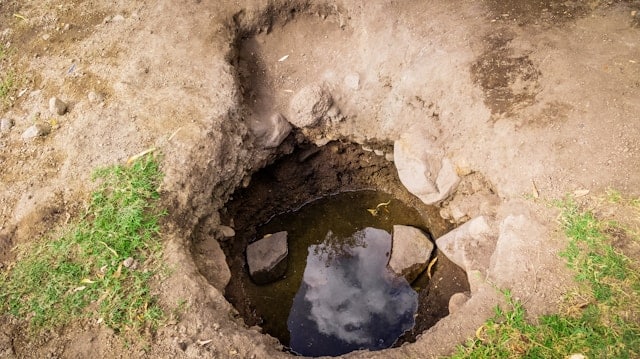Sinkholes can sneak up and cause major headaches if you’re not watching closely.
But the good news? You can spot early warning signs and take straightforward steps to keep your home safe and avoid costly repairs.
Florida homeowners face unique challenges because of our soil and weather conditions, but you don’t have to face them alone. Experts like Helicon have been protecting local properties since 2004 by stabilizing soil and foundations before damage spreads.
With a few proactive habits—like regular inspections and quick fixes—you can strengthen your property’s defenses and enjoy peace of mind knowing your home stands on solid ground.
In this blog, you’ll discover:
- What triggers sinkholes and which areas are most vulnerable
- How to recognize early signs before damage sets in
- Simple, practical tips to prevent sinkhole-related problems
Let’s explore how to keep your home safe and secure from beneath the surface.
Understanding Sinkhole Risks
Knowing what causes sinkholes, spotting early signs, and understanding where they happen most can help protect your property.
Common Causes of Sinkholes
Water dissolves soil or rock beneath the ground, creating sinkholes. This usually happens with limestone or other soft rock types. Rain, broken pipes, or sudden drainage changes can speed up this process.
Human activities like drilling, construction, or changing groundwater levels also increase sinkhole risks around homes. Heavy rain or flooding often triggers a collapse in already weak areas.
Regular checks for plumbing leaks and avoiding overwatering near foundations can reduce the chance of sinkholes.
Recognizing Warning Signs Near Properties
Spotting early warning signs around your home is crucial to catching sinkhole problems before they escalate. Keep an eye out for:
- Cracks in walls or ceilings that suddenly appear or grow over time. These might be narrow at first but can widen as the ground shifts.
- Uneven or sloping floors that feel off-balance when you walk.
- Doors and windows that stick, jam, or don’t close properly, which often happens when your home’s foundation moves.
Outside, watch for:
- Sagging or sunken spots in your yard that weren’t there before.
- Unexpected pools of standing water after rain, indicating poor drainage or shifting soil.
- Gaps or separations forming around your foundation or sidewalks, which can signal soil erosion underneath.
If you notice any of these signs, don’t wait; schedule a professional inspection promptly. Early detection means you can address small issues before they turn into expensive, dangerous sinkhole damage.
Geographic Areas Most Prone to Sinkholes
Certain places are more likely to have sinkholes because of the type of soil and rock underground. Florida, for example, has many areas with limestone close to the surface, making sinkholes more common.
Other states, such as Texas, Alabama, and Pennsylvania, also have high sinkhole risks. Living in these regions means you should be more alert to changes around your property.
Helicon can check and fix soil stability to protect your home from damage if you live in a sinkhole-prone area.
Preventing Sinkhole-Related Property Damage
To protect your property from sinkholes, you must understand the ground you’re building on, manage water well, use soil techniques, and keep your land in good shape.
Site Assessments and Professional Inspections
Before buying or building, get a thorough site assessment.
Professionals check the soil type, rock layers, and past sinkhole activity. This helps spot weak areas that can collapse.
Look for signs like cracks in walls, uneven floors, or sudden changes in moisture. Act quickly if you notice any. Experts use tools like ground-penetrating radar and soil sampling to find hidden risks.
Regular inspections, especially after heavy rain, keep you aware of changes below the surface. Our trained inspectors can help identify problems early and suggest the right fixes.
Effective Drainage and Water Management
Water plays a significant role in causing sinkholes.
Poor drainage can wash away soil, making the ground unstable. To prevent this, create a system that directs water away from your house and foundation.
Use gutters, downspouts, and drains to move rainwater to safe places. Avoid pooling water near walls or under your home. Fix leaks quickly and keep pipes in good condition.
Consider installing a French drain or dry well to improve drainage. Proper yard grading, sloping the ground away from your home, helps keep water flowing properly.
Soil Stabilization Techniques
If your property has weak soil, soil stabilization can strengthen it. This process reduces soil movement and makes building on or maintaining your structures safe.
Methods include injecting chemical grouts or using compaction to pack soil tightly. These solutions fill voids and harden the ground underneath.
You may also consider adding layers of stronger material or geotextiles under weak soil areas.
Property Maintenance and Landscaping Practices
Keep your yard and property well-maintained to avoid sinkhole damage.
- Avoid planting large trees close to your house. Their roots can disrupt soil and water patterns.
- Water your plants properly without overwatering, since too much moisture weakens the soil.
- Also, regularly check your yard for cracks or depressions that might signal soil loss.
- Fill any holes or gaps promptly and keep driveways, patios, and walkways level.
Proper landscaping prevents water from collecting near your foundation. By combining good care and smart landscaping, you keep your soil stable and reduce risks linked to sinkholes.
Responding to Sinkhole Incidents
When a sinkhole appears on your property, act quickly to protect your safety and limit damage. Secure the area, get professional repair help, and notify the right people for support and insurance claims.
Immediate Safety Measures
If you discover a sinkhole on your property, follow these crucial safety steps:
- Keep everyone away: Secure the area using cones, caution tape, or barriers to prevent accidents.
- Do not attempt repairs yourself: Never try to fill or cross the sinkhole—it’s unsafe.
- Inspect nearby structures: Look for new cracks in walls, doors that stick, or uneven floors that may signal foundation damage.
- Evacuate if necessary: If you smell gas or detect water leaks, leave your home immediately and call emergency services.
Your safety and your family’s well-being come first.
Professional Remediation Options
Once the site is safe, professional repairs usually include:
- Site assessment: Experts evaluate the sinkhole size and impact using specialized tools.
- Chemical grouting: Injection of expanding grout to fill voids and stabilize soil.
- Soil compaction: Techniques to pack and strengthen loose or eroded soil beneath your foundation.
- Foundation reinforcement: Strengthening your home’s base to prevent future settling or collapse.
- Detailed reporting: Providing you with inspection results and a clear, step-by-step repair plan.
Knowing what to expect helps you stay informed and confident in the remediation process.
Contacting Local Authorities and Insurance Providers
Dealing with a sinkhole involves more than repairs—it’s important to keep the right people informed. Here’s what you need to do:
- Notify local authorities: Contact your city or county government or building department. They may have regulations, inspection requirements, or resources to help manage sinkhole hazards safely.
- Inform your insurance company promptly: Reach out to your insurer as soon as possible. Submit clear photos and any professional reports or documentation you have related to the damage.
- Keep detailed records: Maintain organized records of all communications with authorities, contractors, and insurers, as well as invoices and repair documents. This paperwork is crucial for proving damage and supporting your claims.
Staying proactive with these steps can help ensure a smoother process and better protection for your home.
Comparing Sinkhole Repair Methods: Choosing the Right Solution for Your Home
When it comes to sinkhole repair, understanding your options is key to choosing the best solution for your property and budget. Different methods address varying degrees of damage and soil conditions.
Here’s a clear comparison of the most common repair techniques, helping you make an informed decision.
| Repair Method | Purpose | Best For | Pros | Cons |
| Chemical Grouting | Fills underground voids to stabilize soil | Small to medium sinkholes | Fast cure, minimally invasive | May not suit very large voids |
| Soil Compaction | Packs loose soil to strengthen ground | Larger sinkholes or cavities | Strong soil stabilization | Requires heavy equipment |
| Push Piers | Transfers structure load to stable soil | Foundation settlement | Permanent support, durable | Higher cost, invasive |
| Helical Piers | Screw anchors into firm soil | Limited access sites, deep foundations | Quick installation, corrosion resistant | Not suitable for all soils |
Final Thoughts
Sinkholes may seem like a distant worry until they threaten your home.
Understanding the risks, spotting early signs, and knowing how to respond puts you in control of protecting your property.
With Florida’s unique geology, proactive steps like regular inspections and soil stabilization are essential. Helicon has been helping homeowners since 2004 with expert assessments and proven repair solutions tailored to our coastal conditions.
Don’t wait for damage to escalate—if you suspect sinkhole activity or want peace of mind, schedule a free inspection with Helicon today. Our trusted team will guide you through the process, ensuring your home stays safe and stable for years to come.
Frequently Asked Questions
Sinkholes raise a lot of concerns for homeowners, from safety to costs and insurance. If you’re wondering what to expect or how to prepare, these FAQs cover important points that go beyond the basics, helping you stay informed and ready.
How often should I schedule sinkhole inspections for my property?
Annual inspections are recommended, especially after heavy rains or storms. Frequent checks help catch early soil movement and prevent costly damage before it worsens.
Can landscaping choices impact sinkhole formation?
Yes, planting large trees near your home can worsen soil shifting due to root growth. Proper landscaping with deep-rooted but distant plants helps stabilize soil and reduce sinkhole risks.
Are there warning sounds that indicate a sinkhole is forming?
Sometimes, homeowners report popping or cracking noises as underground soil shifts. While not always present, unusual sounds near your foundation should prompt immediate inspection.
What should I do if I notice sudden changes in my well water?
Cloudy or muddy water can indicate soil disturbances from sinkholes. Test your water regularly and contact experts promptly if you observe significant changes.
Is it possible to fully prevent sinkholes on my property?
While natural sinkholes can’t be entirely prevented, regular maintenance, proper drainage, and soil stabilization significantly reduce risks and minimize potential damage.





